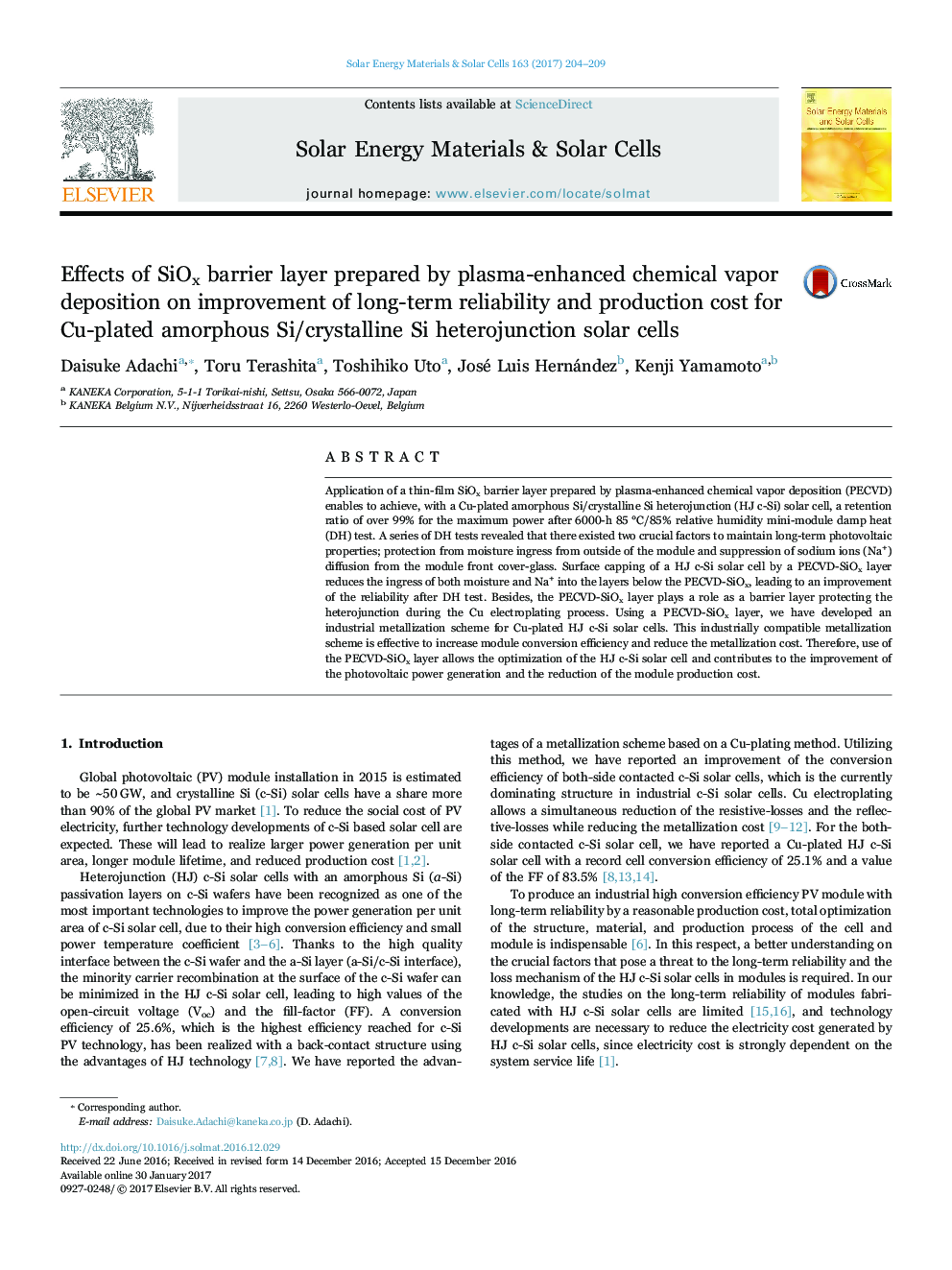| Article ID | Journal | Published Year | Pages | File Type |
|---|---|---|---|---|
| 6457215 | Solar Energy Materials and Solar Cells | 2017 | 6 Pages |
Application of a thin-film SiOx barrier layer prepared by plasma-enhanced chemical vapor deposition (PECVD) enables to achieve, with a Cu-plated amorphous Si/crystalline Si heterojunction (HJ c-Si) solar cell, a retention ratio of over 99% for the maximum power after 6000-h 85 °C/85% relative humidity mini-module damp heat (DH) test. A series of DH tests revealed that there existed two crucial factors to maintain long-term photovoltaic properties; protection from moisture ingress from outside of the module and suppression of sodium ions (Na+) diffusion from the module front cover-glass. Surface capping of a HJ c-Si solar cell by a PECVD-SiOx layer reduces the ingress of both moisture and Na+ into the layers below the PECVD-SiOx, leading to an improvement of the reliability after DH test. Besides, the PECVD-SiOx layer plays a role as a barrier layer protecting the heterojunction during the Cu electroplating process. Using a PECVD-SiOx layer, we have developed an industrial metallization scheme for Cu-plated HJ c-Si solar cells. This industrially compatible metallization scheme is effective to increase module conversion efficiency and reduce the metallization cost. Therefore, use of the PECVD-SiOx layer allows the optimization of the HJ c-Si solar cell and contributes to the improvement of the photovoltaic power generation and the reduction of the module production cost.
